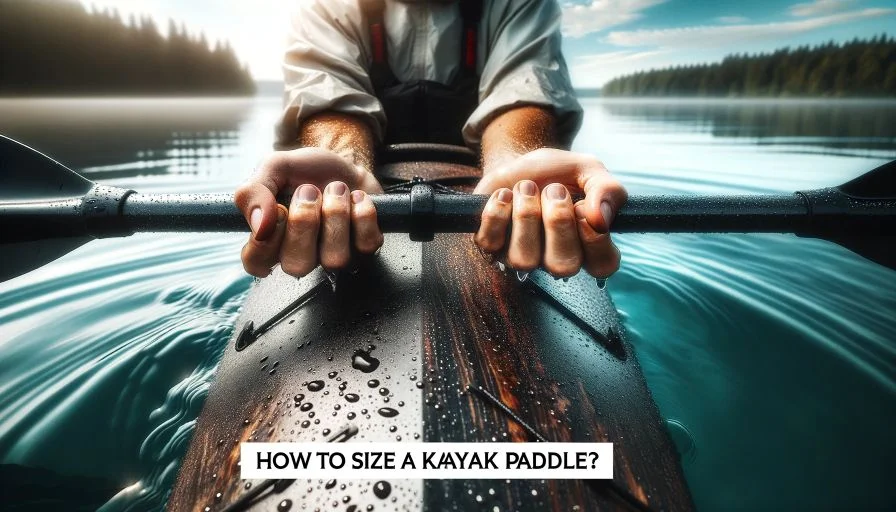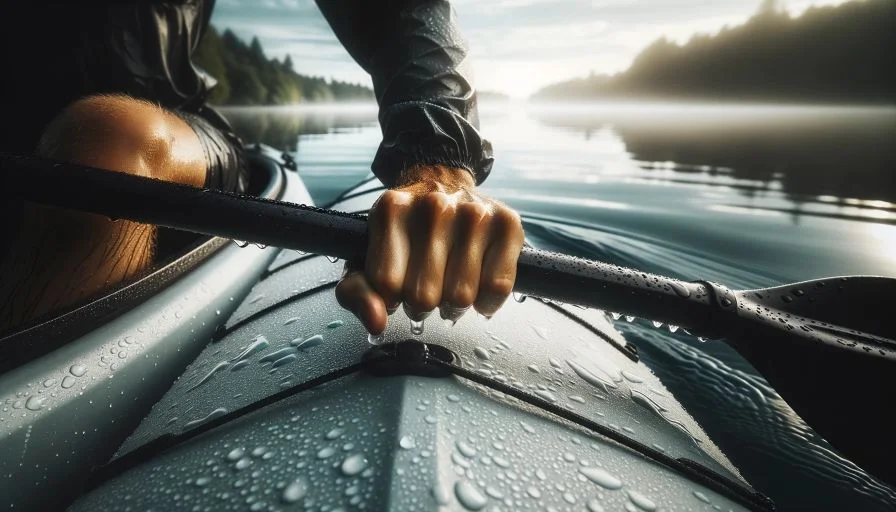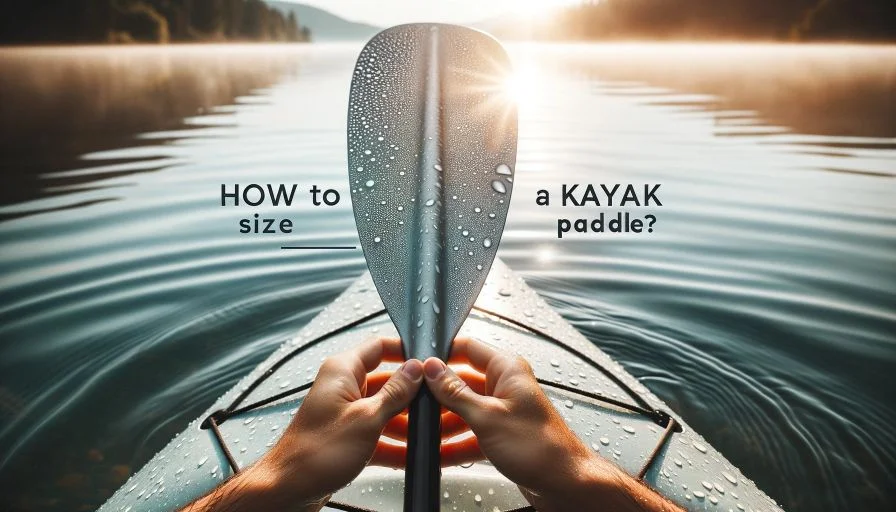Kayaking is an exhilarating sport and recreational activity, offering an unmatched connection with nature and water. But as with any sport, having the right equipment is crucial to your experience. One of the most vital pieces of equipment in kayaking is your paddle. But how do you size a kayak paddle to ensure you get the most from your time on the water? This comprehensive guide seeks to answer that very question.
We’ll delve deep into the factors that influence the appropriate paddle size for you. By understanding elements like the kayak’s width, the paddler’s height, and even your paddling style, you can make an informed decision. Let’s paddle forth into the details!
How to Size a Kayak Paddle Effectively
Paddle Length
Paddle length is the foremost factor you should consider. The correct length ensures that your paddling is efficient and reduces the risk of injury. Factors influencing paddle length include:
- Kayak Width: Wider kayaks require longer paddles. A wider kayak means your paddle will need to reach farther to touch the water effectively.
- Paddler’s Height: Taller paddlers often need longer paddles. Your height is directly related to your arm’s reach, impacting how far you can comfortably extend your paddle into the water.
- Sitting Position: Your posture in the kayak influences paddle length. If you sit higher, you might need a longer paddle to reach the water.
Paddling Style

Your style of paddling is an essential factor in determining paddle size.
- Low-Angle Paddling: This style is more relaxed, with the blade entering the water at a shallower angle. Low-angle paddlers often prefer longer paddles.
- High-Angle Paddling: More aggressive and requires more effort. The blade enters the water at a steeper angle. These paddlers tend to use shorter paddles.
- Whitewater Paddling: This high-intensity paddling style requires shorter paddles for quick maneuverability.
Torso Length
While the paddler’s height gives a general idea, your torso length offers a more accurate measure. It determines how far you can comfortably reach out without straining. Measure from the base of your neck to your seat to find your torso length.
Blade Size and Shape
The blade is the part of the paddle that interacts directly with the water. Its size and shape influence how much resistance you feel while paddling.
- Larger Blades: Offer more power but require more strength. They’re ideal for short bursts of speed or whitewater paddling.
- Smaller Blades: Are easier to handle, especially for longer trips, as they cause less fatigue.
- Narrow Blades: Allow for a faster paddling rate.
- Wide Blades: Are perfect for powerful strokes.
Materials and Price
Just like any piece of equipment, the materials used in the paddle’s construction impact its price, weight, and durability.
- Plastic or Nylon Blades: Are affordable but less efficient due to their flexibility.
- Fiberglass: Is lightweight and offers a balance between price and performance.
- Carbon-fiber: Is the premium choice. It’s incredibly lightweight and efficient but comes at a higher price.
Adjustable Length Paddles

For those uncertain about their ideal paddle length or who use multiple kayaks, adjustable length paddles are a godsend.
- Versatility: They can be adjusted to various lengths, allowing you to experiment and find your most comfortable setting.
- Sharing: If you share your paddle with someone of a different height or torso length, this feature ensures everyone has a tailored experience.
By now, you’ve gained a solid understanding of the factors influencing the sizing of kayak paddles. But how do you apply this knowledge? Testing and experimentation are the answers. Moreover, paddle size charts offer a quick reference point.
Testing and Experimentation
The theoretical knowledge you gain from factors like paddler’s height and kayak width is invaluable. However, personal comfort and efficiency can only be judged by testing different paddle sizes. Try various lengths and see which feels most natural. Consider borrowing or renting paddles to experiment before making a purchase.
Paddle Size Charts
These charts offer a general guideline based on common factors like paddler’s height and kayak width. They’re a good starting point but remember that personal comfort is paramount.
| Paddler’s Height | Kayak Width | Recommended Paddle Length |
|---|---|---|
| Under 5’5″ | Under 23″ | 210-220 cm |
| 5’5″ – 5’11” | 24″ – 28″ | 220-230 cm |
| Over 6′ | Over 29″ | 230-240 cm |
Other Factors to Consider
While we’ve discussed the primary factors influencing paddle size, other elements can sway your decision.
Skill Level
Your expertise level in kayaking can dictate the paddle size:
- Beginners: Might find shorter paddles easier as they’re lightweight and manageable.
- Intermediate to Advanced: Paddlers often prefer longer paddles for their efficiency and power.
Type of Waters
The nature of the water body you paddle in can influence your choice:
- Calm Lakes or Seas: A longer paddle might be preferable for its efficiency on long journeys.
- Rapid Rivers or Whitewater Paddling: Shorter paddles are favored for their quick response and maneuverability.
Personal Preference
At the end of the day, personal comfort trumps all. Some paddlers might prefer a paddle that’s longer or shorter than recommended based on their unique paddling style or physical comfort.
Consulting Experts
When in doubt, consulting seasoned kayakers or experts at your local kayaking store can provide valuable insights. Their experience can guide you to a paddle that suits your needs.
Maintenance and Care
Regardless of the size, maintaining your kayak paddle ensures it remains efficient and prolongs its lifespan:
- Regular Inspection: Check for cracks, especially if you’ve hit a rock or hard surface.
- Cleaning: Freshwater rinse after every use, especially if you paddle in saltwater, to prevent corrosion.
- Storage: Store in a cool, dry place away from direct sunlight.
Conclusion
Choosing the right-sized kayak paddle is a blend of understanding the technical factors and acknowledging personal preferences. By considering the kayak width, paddler’s height, and paddling style, among others, you’re well on your way to making an informed choice.
Remember that the journey to find the perfect paddle might involve some trial and error. But with the knowledge from this guide, the path becomes clearer. Embrace the adventure, knowing that the right paddle can significantly enhance your kayaking experience.
Happy paddling!
Read More:
- What Size Kayak Paddle Do I Need?
- DIY Floating Cooler for Kayak
- How to Hold a Kayak Paddle?
- How to Choose a Kayak Paddle?

Hi, I’m Steve, the passionate kayaking enthusiast behind Outdoor Bravo. As an avid adventurer and nature lover, kayaking has been a central part of my life for as long as I can remember. My love affair with the water began during my childhood, and it has only grown stronger over the years. From serene lakes to rushing rivers and even challenging ocean tides, I’ve navigated various water bodies, seeking new thrills and unforgettable experiences.
